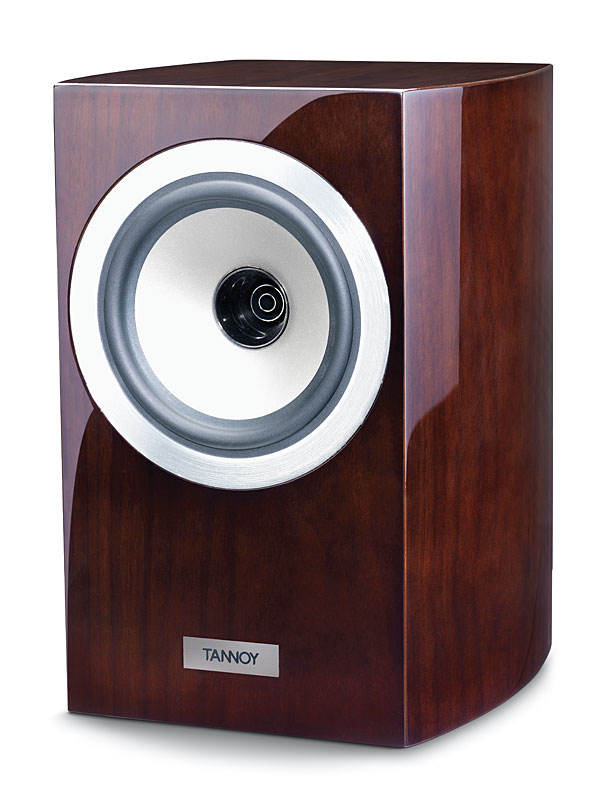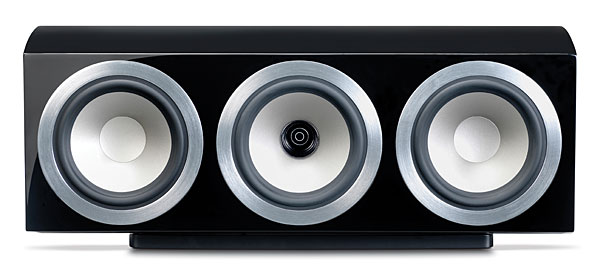Tannoy Precision Speaker System

If you read a lot of British novels, eventually you’ll run across a reference to an announcement “on the Tannoy” in a train station or airport. In the U.K., the birthplace of Tannoy Ltd., the loudspeaker brand is a synonym for public-address system. No other speaker manufacturer in the world enjoys this distinction, though it comes at a price: The Tannoy people are constantly firing off letters to publications that make the mistake of using tannoy generically, without the proper cap-T to indicate its trademark status.
Trivia buffs may be surprised to discover that the firm was founded in 1926 as the Tulsemere Manufacturing Company in England. Not until 1932 did the brand name become Tannoy, an abbreviation for tantalum alloy, a material used in the electronic guts of its early products. Tannoy relocated its design and engineering center to Scotland about a half-century later, and for the past decade has been owned by the Denmark-based TC Group.
Tannoy’s main talking point today is not its historic background but the use of what it calls a Dual Concentric driver array in several of its dizzyingly numerous speaker lines. The tweeter is mounted in the center axis of the woofer. The generic term is coaxial array, and the practical results in this case are pinpoint imaging, controlled directivity, and even coverage over a relatively large listening area. Even in two-channel mode, imaging is so precise that you might suspect the center speaker is operating. In surround mode, lateral and front-to-back panning follow precise and easily discernible trajectories. Surround effects in particular can be startling.
Models and Bundles
The system under review includes two models from the new Precision line. The Precision 6.1 monitor ($598/each) serves in the front and surround positions, joined in the front by the Precision 6C center ($998). Precision models not reviewed include a pair of floorstanders, the 6.2 ($1,198/each) and 6.4 ($1,598/each). Two complementary subwoofers are available, including the 10-inch TS2.10 ($819) and our reviewed system’s 12-inch TS2.12 ($1,024). While the 6.1 and TS2.12 are available in multiple finishes, the 6C is available only in gloss black, making that the sole unifying finish in the combination of models reviewed here.
The 6.1 monitor has parallel walls front/back and top/bottom, but curved side panels. This makes for a more pleasing appearance but also serves the function of minimizing bass-bloating standing waves within the enclosure. The 6C has the same curves at top/bottom, while the sub is a traditional rectangular solid. Tannoy’s DMT (Differential Materials Technology) uses energy-absorbing compounds to isolate the driver units and crossover circuitry from the enclosure. This dumps extraneous energy through the spikes, stand, or platform, restricting woofer-generated cabinet resonance from affecting the tweeter. It also mollifies the crossover’s capacitors, making them less likely to act as microphones by picking up cabinet vibrations.

As mentioned earlier, the Dual Concentric array places a 1-inch titanium-domed tweeter in the center of a 6-inch woofer cone made of paper pulp fibers of varying lengths. Tannoy applies the name WideBand to the tweeter, referring to its claimed ability to reproduce high frequencies up to 35 kilohertz (–6 decibels). It is crossed over to the woofer at 1.6 kHz, which is decidedly lower than average, and requires the tweeter to handle a larger portion of midrange. This didn’t increase distortion as far as I could tell. The tweeter is deeply recessed into what the company calls their Tulip WaveGuide, which takes the shape of the flower and is nearly as large. Tannoy says this produces a spherical wavefront, reducing cupped-hands coloration (the potential pitfall of any coaxial array with a recessed tweeter) and improving imaging.
The choice of a multi-fiber paper for the woofer is said to provide the most “natural communication” in midrange response. Woofers benefit from a large dual-magnet structure, internal wiring made of silver-plated copper, and point-to-point connections between discrete components (as opposed to a printed circuit board) in the crossover.
While the monitors have ports, the center and sub do not. In the center, the coaxial driver array is augmented and flanked by a pair of passive radiators—or as Tannoy calls them, Auxiliary Bass Radiators—which operate below 170 hertz. The sub also uses an ABR in combination with an active driver. By eliminating the port from the center, Tannoy has eliminated port turbulence, along with any potential problems that a blocked port would cause with in-cabinet, on-shelf, or near-wall placement. A separate plinth is supplied to aim the center toward the seating position at the optimum angle.

Both the monitor and the center include five binding posts, which support biwiring or biamping. If you’d prefer not to exercise those options, spade-lug bridge cables are supplied. There is also an unusual fifth binding post for connection to the same ground as your amplifier. Tannoy says this reduces RF interference in the system. Connecting it is not compulsory—I got along without it.
The TS2.12 sub uses dual side-firing drivers, one active and one passive, in a 1-inch-thick enclosure that stands on polymer cones. For nearly a thousand bucks, I’d prefer metal cones, but considering how well this sub performed, I may be nitpicky about that. The sub goes digital for the crossover, and includes a switching amplifier specified at 500 watts RMS.
























































